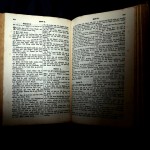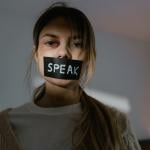There are many different views about the validity and effectiveness of Kate Kelly and Ordain Women’s campaign to seek redress for long-held institutional sexism, and I think it will take us a long time yet to fully understand what really happened this week as many people stopped to reflect more deeply about the state and future of Mormonism and whether that Mormonism is something they recognize or even want to belong to.
But for the moment, I just wanted to note the irony from a sociological perspective of a woman seeking ordination to the priesthood from those who self-identify as prophets, seers, and revelators. In the sociology of religion, there is often a basic distinction drawn between the categories of priesthood and prophethood. To put things simply, whereas prophets tend to come from outside centers of institutional authority, articulate ethical visions at odds with the accepted norms of the cultural status-quo, and legitimize their message through a reliance on personal charisma and deep moral confidence, priests (again from a comparative sociological lens) are often coterminous with central institutions, perpetuate and reinforce traditional norms, and derive their authority from the sacral nature of the traditions that they preserve.
So in the present case, who’s acting as the prophet, and who’s the priest? And does such a sociological interpretation matter?











